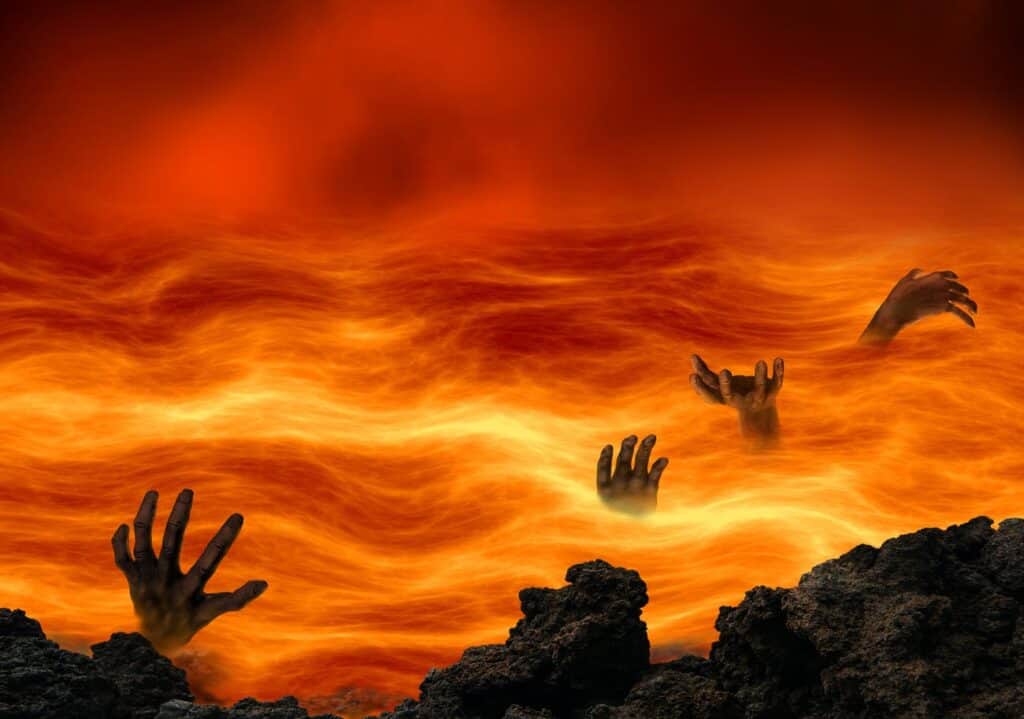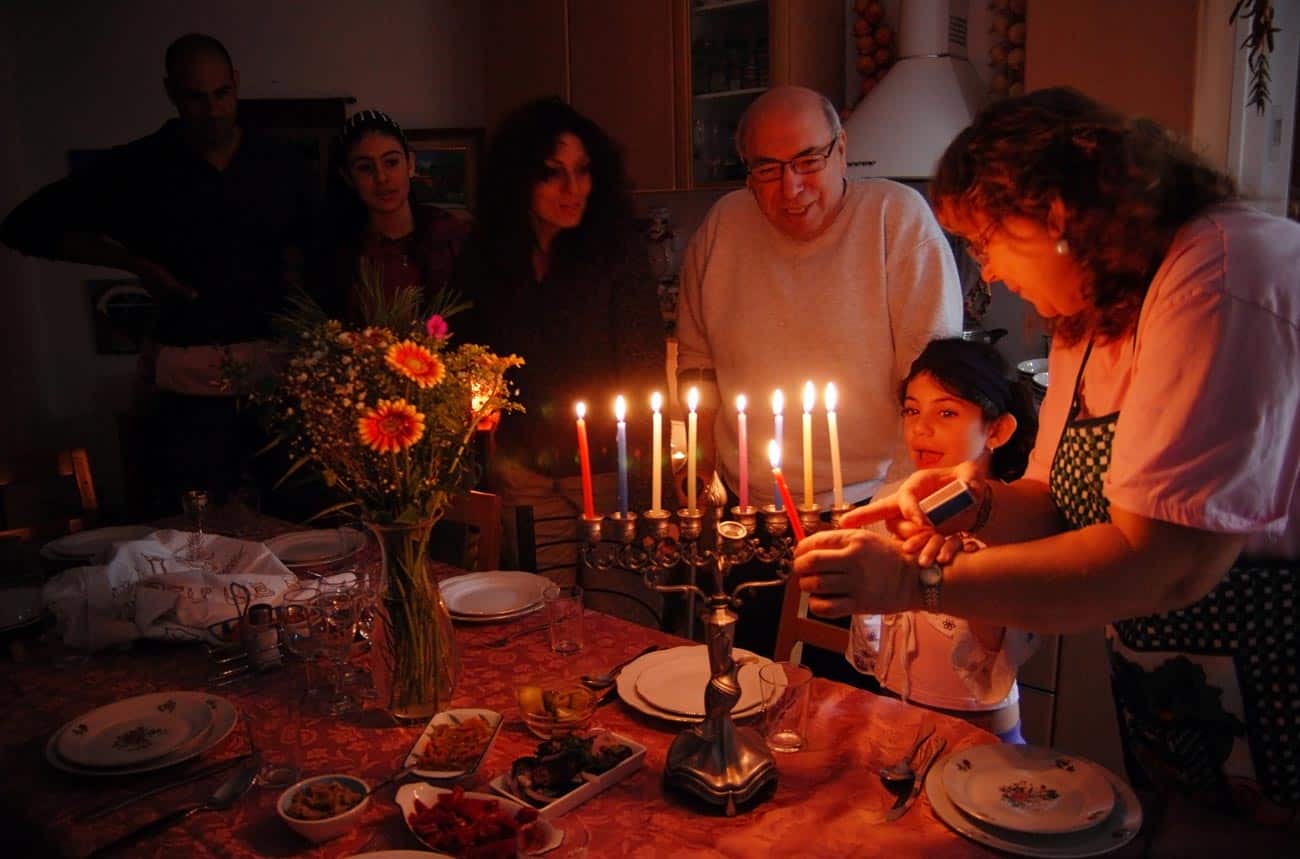When we think of hell, centuries of literature and art draw our minds to a place of fire and torment. In the final chapters of the Bible, John describes a vision of a lake of fire (or burning sulfur, in some translations).
Are the terms interchangeable, or is John describing a different place altogether?
The lake of fire is separate from hell, but the two are closely related. After the end times, when heaven and earth are destroyed and replaced, hell will also be replaced by the lake of fire.
Understanding Hell

In a previous article, we examined the different ways that scripture describes hell and the nuanced meaning and application of each of those names and descriptions.
The Hebrew Sheol and the Greek hades both refer generally to the realm of the dead, where all souls go after separating from the body in physical death. Sheol and hades are represented as places of darkness, emptiness, and isolation.
Jesus expanded our understanding of the afterlife—particularly the reality and seriousness of hell— through several teachings. In his account of Lazarus and the rich man (Luke 16:19-31), Jesus showed two distinct destinations within the realm of the dead.
The first, a place of comfort and rest, he called Abraham’s Bosom (synonymous with paradise). The second destination is a place of torment that is filled with fire. In other passages, Jesus called this place Gehenna.
Hell and Fire
Our concept of hell as a place filled with fire and torment comes first from Jesus’ description of Gehenna in the gospels. Gehenna derived its name from the Hinnom Valley, which had served as Jerusalem’s garbage dump and incinerator.
Pagans (and even some kings of Judea) were known to perform child sacrifices in the fires of Hinnom. The flames themselves were putrid and burned nonstop for centuries as the people continued to add fuel to the fire.
As terrible as it sounds, Gehenna is not the final and eternal destination of the condemned. Hell (Gehenna) will ultimately be emptied into the lake of fire, where the unsaved and the demons will spend eternity.
The distinction might seem trivial to us since all torment is terrible. But examining the difference helps us to understand more fully the dynamics of mortality and eternity, spirits and humans, and life and death.
The Lake of Fire
Before John recounted his vision of the lake of fire in Revelation, Jesus provided us with some insights that help us see how the lake of fire is distinct from hell.
Made for Eternal Beings
“Then he will say to those on his left, ‘Depart from me, you who are cursed, into the eternal fire prepared for the devil and his angels.
Matthew 25:41
While teaching about compassion and judgment, Jesus described the wicked being sent to a place of torment that was prepared for the devil and his angels.
By definition, this place must be distinct from the hell that is contained in the realm of the dead because angels and demons are not subject to death. They were created as non-physical spirits.
By contrast, humans are subject to death and pass from natural life to the appropriate dwelling place of the dead.
Hell and Resurrection
“Do not be amazed at this, for a time is coming when all who are in their graves will hear his voice and come out—those who have done what is good will rise to live, and those who have done what is evil will rise to be condemned.
John 5:28-29
After the end times, heaven, hell, and earth will be destroyed. Before this happens, the dead will be raised for final judgment. From this judgment, each soul is consigned either to eternal life or condemnation. So hell, like paradise, is an intermediary step that bridges physical death and eternity.
Referring again to the rich man and Lazarus, Jesus described a level of interaction between the souls in hell and the souls in heaven, despite the impassable gorge between them. But his description of the final condemnation shows that the lake of fire is a place of complete separation from God—and thus from all that is good.
Who is in the Lake of Fire Now?
The lake of fire is not presently in use and will not be in use until the end times.
When John had his first vision of the lake of fire in Revelation 19, he described the beast and the false prophet being cast into it at their final defeat:
Then I saw the beast and the kings of the earth and their armies gathered together to wage war against the rider on the horse and his army. But the beast was captured, and with it the false prophet who had performed the signs on its behalf. With these signs he had deluded those who had received the mark of the beast and worshiped its image. The two of them were thrown alive into the fiery lake of burning sulfur.
Revelation 19:19-20
In the following chapter—after the 1000-year reign of Christ—the devil himself is shown being cast into the lake of fire:
And the devil, who deceived them, was thrown into the lake of burning sulfur, where the beast and the false prophet had been thrown. They will be tormented day and night for ever and ever.
Revelation 20:10
After this, the final judgment that Jesus mentioned in John 5 is shown, at which point all of hell is cast into the lake of fire:
The sea gave up the dead that were in it, and death and Hades gave up the dead that were in them, and each person was judged according to what they had done. Then death and Hades were thrown into the lake of fire. The lake of fire is the second death. Anyone whose name was not found written in the book of life was thrown into the lake of fire.
Revelation 20:13-15
Why is it Called the Second Death?
Earlier, we mentioned that Sheol/Hades is the realm of the dead. Death, scripture tells us, is the penalty for sin (Romans 6:23). This includes both the physical death of our bodies and the eternal death of total separation from God. The lake of fire is the culmination of this second death.
Those whose sins are covered by Jesus are still subject to the first death but are freed from the penalty of the second death (Revelation 2:11).
The transfer of hell (the realm of the dead) to the lake of fire also coincides with God’s final triumph over death which Paul described, in his teaching about the resurrection, as the last enemy to be defeated (1 Corinthians 15:26).
Though the lake of fire is separate from hell, its relationship to hell provides us a much fuller understanding of how sin, death, judgment, and God’s ultimate victory interrelate. And more importantly, the permanence of the lake of fire reminds us of the urgency of responding to Jesus and accepting His grace in this life.





